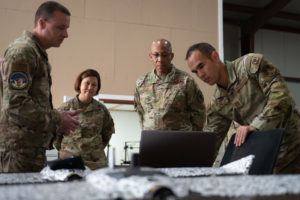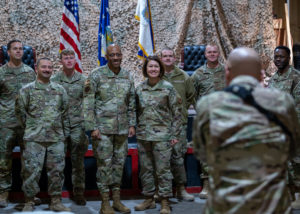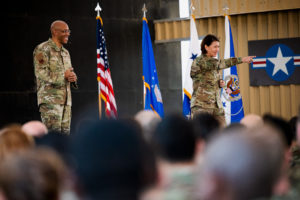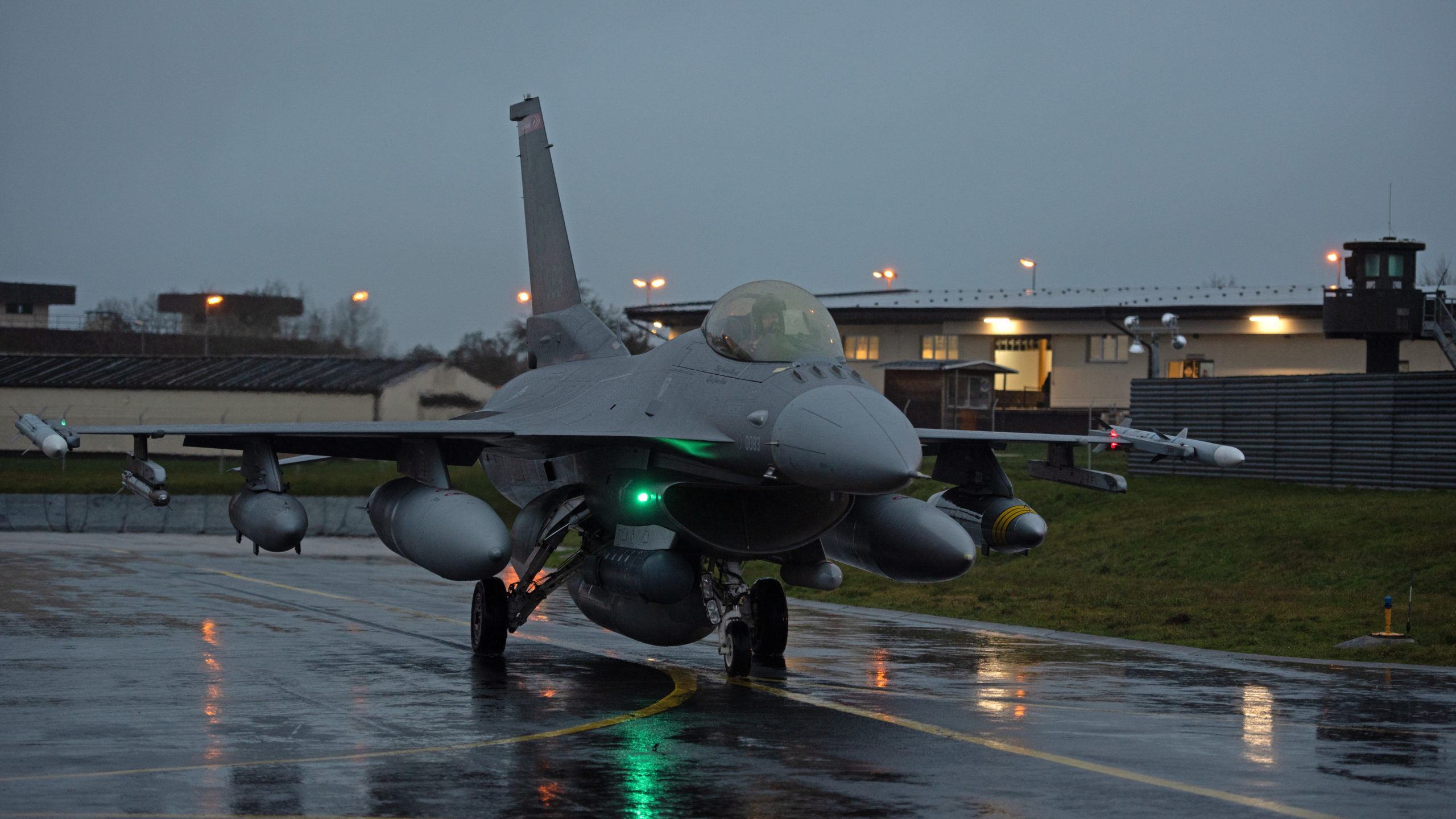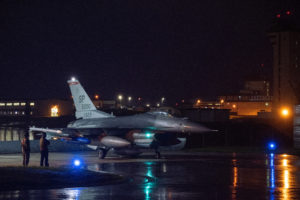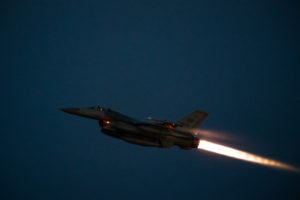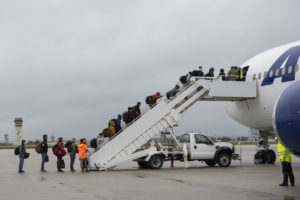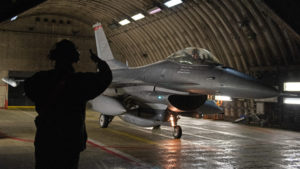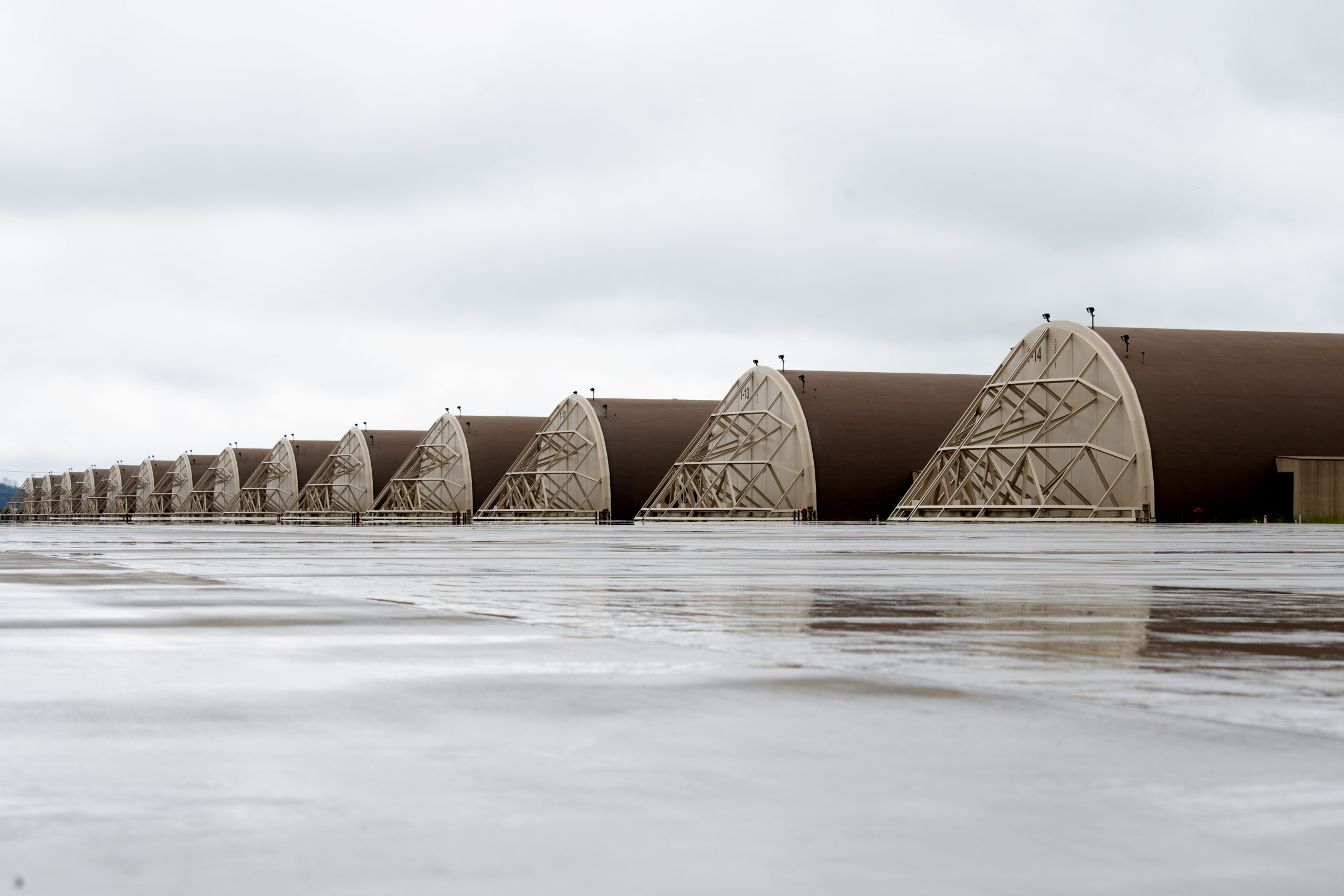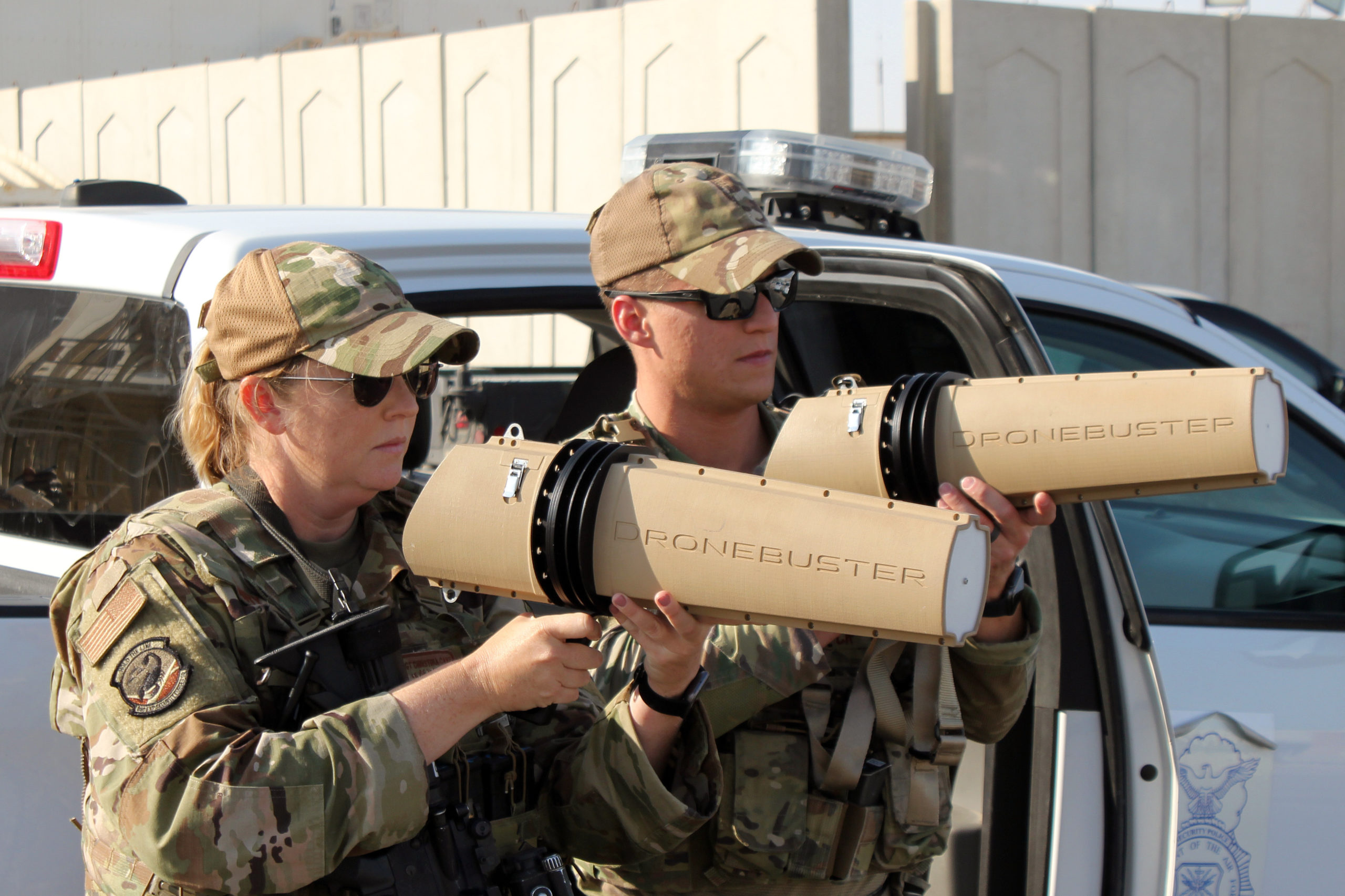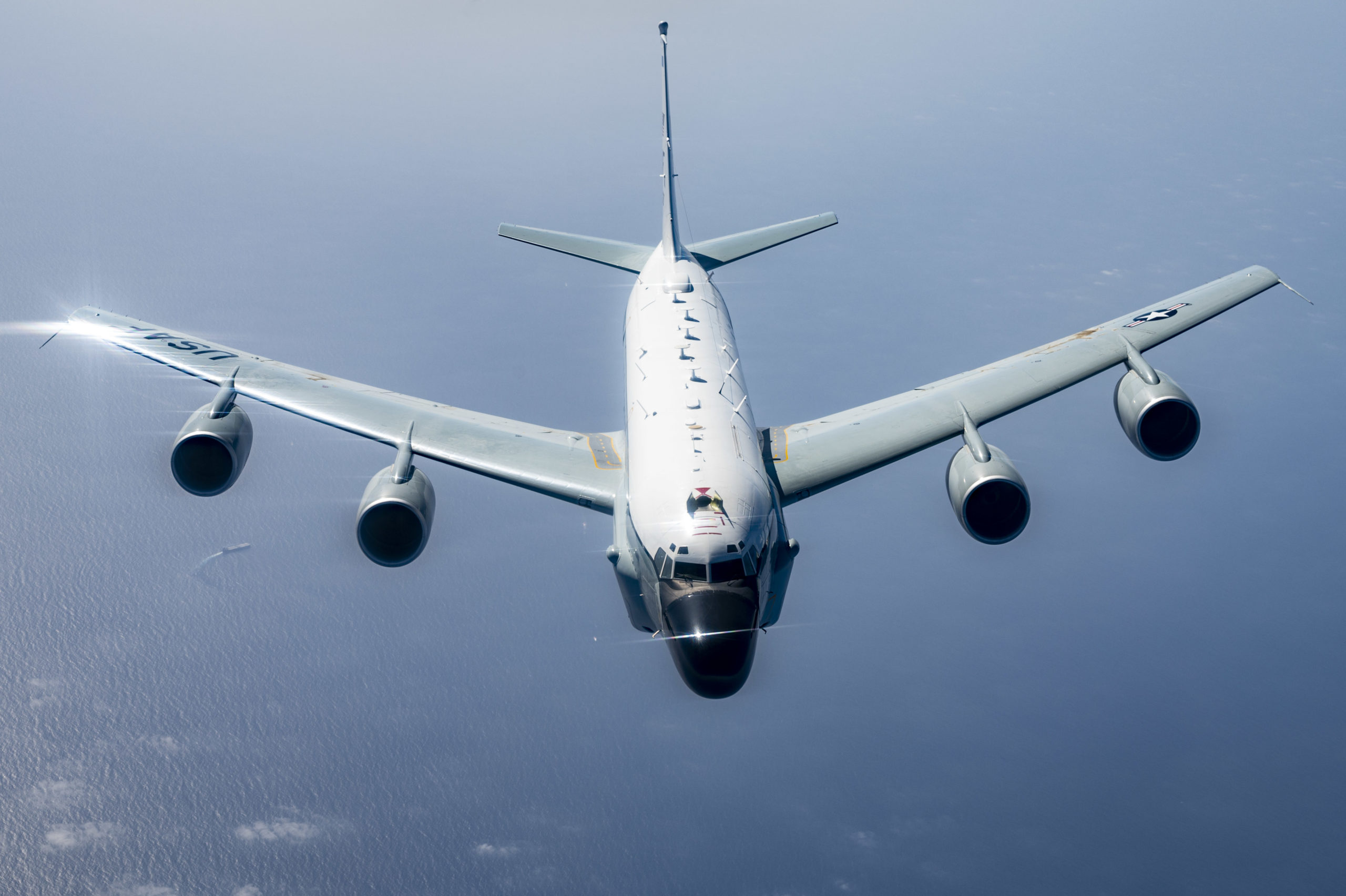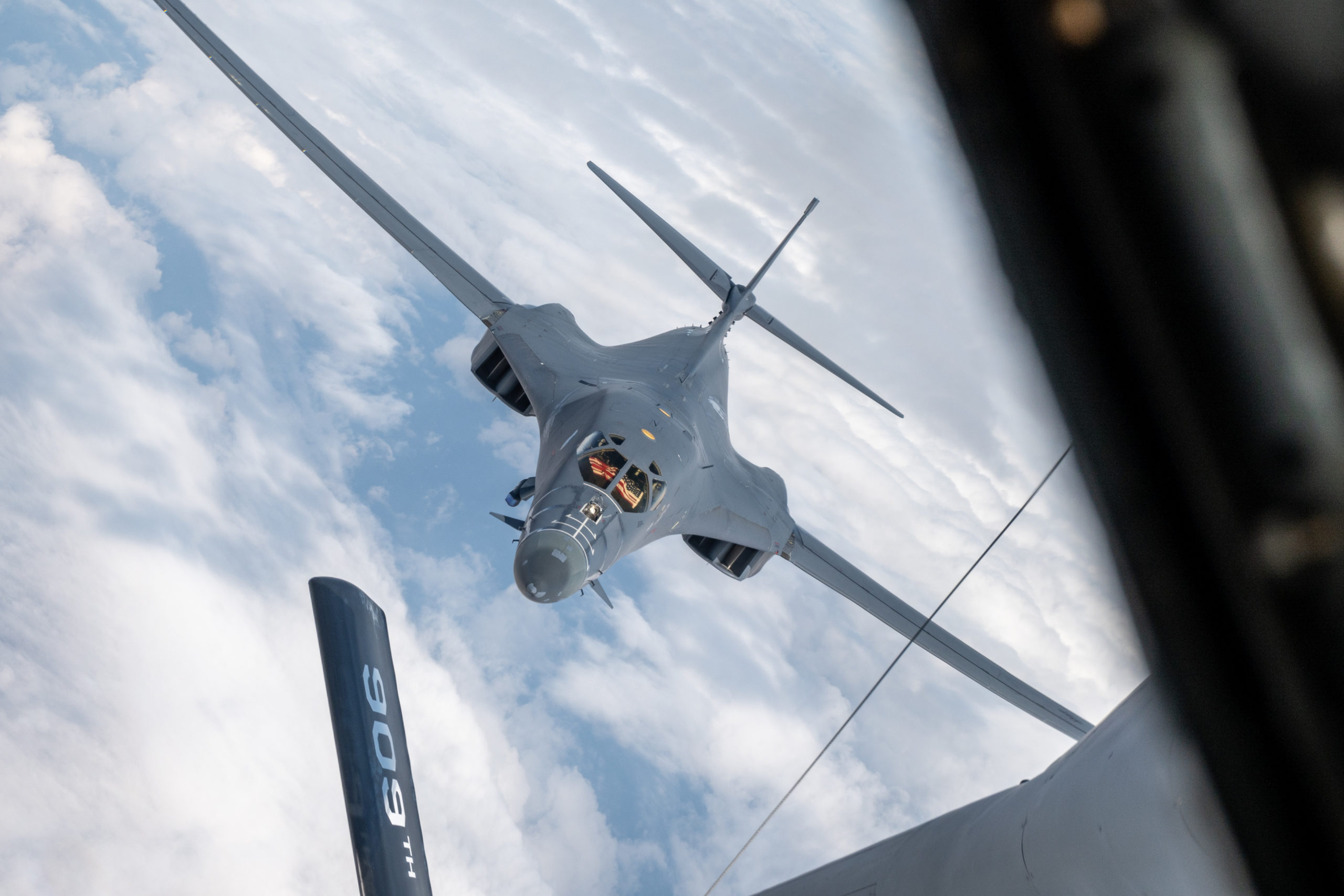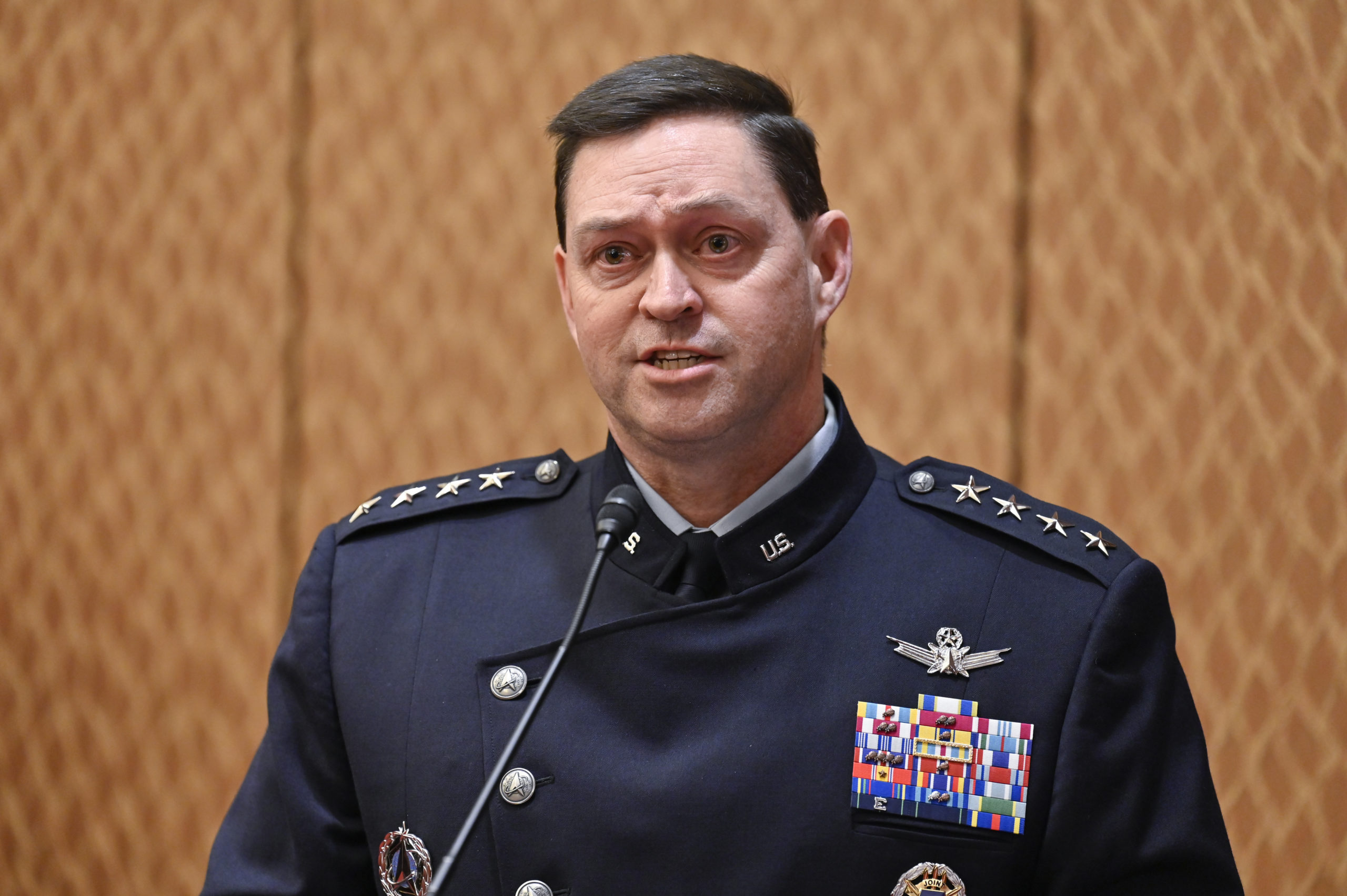Air Force Chief of Staff Charles Q. Brown Jr. took a tour of the Middle East in early January, engaging with U.S. allies and visiting service members in the region, the Air Force announced.
Brown and Chief Master Sergeant of the Air Force JoAnne S. Bass spent three days traveling to Qatar, the United Arab Emirates, and Jordan, from Jan 6-9. The trip included “key leader engagements in multiple countries,” according to an Air Force release.
While much of the U.S. military’s focus has shifted to Russia’s war in Ukraine and long-term strategic competition with China in the Indo-Pacific, the Air Force still conducts significant operations in U.S. Central Command’s area of responsibility.
“The goal of the trip was to highlight the Air Force’s continued commitment to building trust and interoperability with regional partners and to show support for Airmen serving in the AOR, who are promoting stability through the performance of Air Forces Central’s critical operational mission and by promoting partnerships,” the Air Force said in a Jan. 17 news release.
The Air Force played a key role in the campaign to destroy the Islamic State’s self-declared caliphate in Iraq and Syria. But members of the group are attempting to make a comeback, and AFCENT supports ongoing efforts to fight ISIS as part of Operation Inherent Resolve.
The U.S. military also faces persistent threats from Iran and its proxies, which have launched missiles and drones at U.S. bases in Iraq and Syria, forcing the USAF to respond quickly at times. Over the past year, an F-15 blasted an Iranian drone that was heading toward Iraqi Kurdistan, and F-22s have deployed to the region on multiple occasions after reports of potential Iranian threats to allies.
In part due to the Department of Defense’s increased focus on other regions, CENTCOM has sought to refashion itself as a forward-thinking laboratory to test out new capabilities and technologies in combat conditions. Military leaders have insisted the U.S. can expand its partnerships and rely on innovation to counter any perceived gaps in resources.
“In the future, success in how we fight will not be determined by the simple arithmetic of boots on the ground but rather by maintaining our readiness to rapidly respond by flowing forces where they are needed globally, and to fall in with interoperable allies and partners,” Colin Kahl, the undersecretary of defense for policy, said in a speech in Bahrain in November. “The pace of technological change demands that we do business differently, and CENTCOM has become a critical hub for innovation and experimentation.”
As part of that effort, AFCENT stood up Task Force 99 to experiment with relatively cheap drones to “impose a cost for a low cost,” in the words of Lt. Col. Erin Brilla, the unit’s commander. Brown visited Task Force 99 during his visit to Al Udeid. Brown and Bass also visited Al Dhafra Air Base in the UAE, as well as expeditionary air wings in the region.
Brown has firsthand experience in AFCENT, having served as its commander from 2015 to 2016.
AFCENT, now under the command of Lt. Gen. Alexus G. Grynkewich, has put a heavy emphasis on working to increase partnerships in the region, which is fraught with rivalries among countries that are friendly towards America.
During his trip, Brown met Royal Jordanian Air Force commander Brig. Gen. Mohammad Hiyasat as part of the Air Force’s push to engage more with U.S. allies. According to a U.S. Air Force readout of the meeting, the two leaders “agreed on the importance of deepening both bilateral and multilateral cooperation in pursuit of common objectives.”
The Air Force said Brown’s visit highlighted the service’s enduring attention to the Middle East.
“As airpower in the CENTCOM AOR becomes increasingly regionally integrated, AFCENT Airmen are leading the way to improved security for the whole of the Middle East,” Brown said in a statement. “I know that, as our partners interact with our men and women on a daily basis, they are encountering a professional, well-trained force that contributes to our collective, continued success.”

